Description
Intermediate Accounting
Intermediate Accounting Kieso Weygandt Warfield
Intermediate Accounting Kieso Weygandt Warfield 15th
Intermediate Accounting Kieso Weygandt Warfield 15th Test Bank
Intermediate Accounting Kieso 15th Edition Test Bank
***THIS IS NOT THE ACTUAL BOOK. YOU ARE BUYING the Test Bank in e-version of the following book***
Name: Intermediate Accounting
Author: Kieso Weygandt Warfield
Edition: 15th
ISBN-10: 1118147294
Type: Test Bank
– The test bank is what most professors use an a reference when making exams for their students, which means there’s a very high chance that you will see a very similar, if not exact the exact, question in the test!
– The file is either in pdf, doc, rtf or zipped in the package and can easily be read on PCs and Macs.
– Delivery is INSTANT. You can download the files IMMEDIATELY once payment is done.
If you have any questions, please feel free to contact us. Our response is the fastest. All questions will always be answered in 6 hours., most of the time within 30mins
We also faced similar difficulities when we were students, and we understand how you feel.
But now, with the Intermediate Accounting 15th Test Bank, you will be able to
* Anticipate the type of the questions that will appear in your exam.
* Reduces the hassle and stress of your student life.
* Improve your studying and also get a better grade!
* Get prepared for examination questions.
* Can save you time and help you understand the material.
This is the quality of service we are providing and we hope to be your helper.
Delivery is in the next moment. Test Bank is accurate.
Prepare to receive your Intermediate Accounting 15th Test Bank in the next moment.
ISBN-10: 1118147294
If you have any questions, or would like a receive a sample chapter before your purchase, please contact us at inquiry@testbankcorp.com
Intermediate Accounting
Intermediate Accounting Kieso Weygandt Warfield
Intermediate Accounting Kieso Weygandt Warfield 15th
Intermediate Accounting Kieso Weygandt Warfield 15th Test Bank
Intermediate Accounting Kieso 15th Edition Test Bank
CHAPTER 4
INCOME STATEMENT AND RELATED INFORMATION
IFRS questions are available at the end of this chapter.
TRUE-FALSe—Conceptual
Answer No. Description
T 1. Usefulness of the income statement.
F 2. Limitations of the income statement.
F 3. Earnings management.
T 4. Transaction approach of income measurement.
T 5. Single-step income statement.
T 6. Revenues and gains.
T 7. Income from continuing operations.
F 8. Multiple-step income statement.
T 9. Multiple-step vs. single-step income statement.
F 10. Current operating performance approach.
T 11. Reporting discontinued operations.
F 12. Reporting extraordinary items.
F 13. Irregular items.
T 14. Intraperiod tax allocation.
T 15. Reporting earnings per share.
F 16. Computation of earnings per share.
T 17. Prior period adjustments.
T 18. Retained earnings restrictions.
F 19. Comprehensive income definition.
T 20. Reporting other comprehensive income.
Multiple Choice—Conceptual
Answer No. Description
c 21. Elements of the income statement.
d 22. Usefulness of the income statement.
b 23. Limitations of the income statement.
d S24. Use of an income statement.
d S25. Income statement reporting.
b 26. Usefulness of income statement.
b 27. Example of managing earnings down.
c 28. Example of managing earnings up.
b 29. Improving current net income.
a 30. Decreasing current net income.
d 31. Single-step income statement advantage.
b 32. Single-step income statement.
d 33. Methods of preparing income statements.
a 34. Income statement presentation.
b 35. Event with no income statement effect.
c S36. Event with no income statement effect.
Multiple Choice—Conceptual (cont.)
Answer No. Description
b P37. Selling expenses.
b P38. Reporting merchandise inventory.
a 39. Definition of an extraordinary item.
c 40. Accounting for changes in estimates.
d 41. Identification of an extraordinary item.
a 42. Identification of an extraordinary item.
d 43. Identification of an extraordinary item.
a 44. Presentation of unusual or infrequent items.
a 45. Reporting of a change in accounting principle.
d 46. Classification of extraordinary items.
c 47. EPS disclosures on income statement.
c 48. Reporting discontinued operations.
c S49. Reporting unusual or infrequent items.
d 50. Intraperiod tax allocation.
d 51. Purpose of intraperiod tax allocation.
c 52. Intraperiod tax allocation.
d 53. Reporting items net of tax.
d 54. Reporting items at gross amount.
c 55. Earnings per share disclosure.
b 56. EPS and preferred dividends.
d 57. EPS disclosures on income statement.
c S58. Earnings per share disclosure.
d P59. Reporting correction of an error.
c 60. Retained earnings statement.
d 61. Prior period adjustment.
d 62. Identification of a prior period adjustment.
b 63. Reporting EPS amounts.
c 64. Reporting EPS on financial statements.
b 65. Comprehensive income inclusion.
a 66. Displaying comprehensive income.
d 67. Comprehensive income two statement approach.
c 68. Comprehensive income items.
c 69. Statement of stockholders’ equity.
Multiple Choice—Computational
Answer No. Description
a 70. Calculate total revenues.
c 71. Calculate total expenses.
a 72. Single-step income statement.
c 73. Multiple-step income statement.
c 74. Calculate other expenses and losses.
c 75. Calculation of net sales.
a 76. Presentation of gain on sale of plant assets.
a 77. Extraordinary items.
a 78. Extraordinary items.
a 79. Calculate income before extraordinary items.
c 80. Calculate income before taxes and extraordinary items.
Multiple Choice—Computational (cont.)
b 81. Calculate extraordinary loss.
a 82. Events affecting income from continuing operations.
b 83. Calculation of events affecting net income.
c 84. Disposal of a major business component.
c 85. Tax effect on irregular items.
c 86. Tax effect on irregular items.
b 87. Calculate income tax expense.
a 88. Calculate income tax expense.
a 89. Calculate income tax expense.
b 90. Calculate earnings per share.
d 91. Calculate EPS for extraordinary loss.
d 92. Calculate earnings per share.
c 93. Earnings per share.
c 94. Earnings per share.
a 95. Retained earnings statement.
b 96. Retained earnings statement.
c 97. Retained earnings statement.
d 98. Retained earnings statement.
d 99. Calculate balance of retained earnings.
d 100. Calculate other comprehensive income.
a 101. Calculate comprehensive income.
c 102. Calculate ending Accumulated Other Comprehensive Income.
c 103. Calculate ending Retained Earnings balance.
a 104. Calculate total stockholders’ equity.
P Note: these questions also appear in the Problem-Solving Survival Guide.
S Note: these questions also appear in the Study Guide.
Multiple Choice—CPA Adapted
Answer No. Description
d 105. Calculate selling expenses.
a 106. Calculate general and administrative expenses.
a 107. Calculate selling expenses.
a 108. Calculate general and administrative expenses.
d 109. Calculate cost of goods manufactured.
c 110. Calculate income before extraordinary item.
a 111. Determine extraordinary loss.
b 112. Determine infrequent gains not extraordinary.
a 113. Determine infrequent losses not extraordinary.
b 114. Identification of prior period adjustment.
BRIEF Exercises
Item Description
BE4-115 Definitions.
BE4-116 Terminology.
BE4-117 Income statement disclosures.
EXERCISES
E4-118 Calculate net income from change in stockholders’ equity.
E4-119 Calculate net income from change in stockholders’ equity.
E4-120 Income statement classifications.
E4-121 Income statement relationships.
E4-122 Multiple-step income statement.
E4-123 Classification of income and retained earnings statement items.
PROBLEMS
Item Description
P4-124 Multiple-step income statement.
P4-125 Income statement form.
P4-126 Multiple-step income statement.
P4-127 Single-step income statement.
P4-128 Income statement and retained earnings statement.
P4-129 Irregular items and financial statements.
CHAPTER LEARNING OBJECTIVES
- Understand the uses and limitations of an income statement.
- Describe the content and format of the income statement.
- Prepare an income statement.
- Explain how to report various income items.
- Identify where to report earnings per share information.
- Understand the reporting of accounting changes and errors.
- Prepare a retained earnings statement.
- Explain how to report other comprehensive income.
- Compare the accounting procedures for income reporting under GAAP and IFRS.
SUMMARY OF LEARNING OBJECTIVES BY QUESTIONS
| Item | Type | Item | Type | Item | Type | Item | Type | Item | Type | Item | Type | Item | Type |
| Learning Objective 1 | |||||||||||||
| 1. | TF | 21. | MC | S24. | MC | 27. | MC | 30. | MC | 117. | BE | ||
| 2. | TF | 22. | MC | S25. | MC | 28. | MC | 115. | BE | 118. | E-CT | ||
| 3. | TF | 23. | MC | 26. | MC | 29. | MC | 116. | BE | 119. | E-CT | ||
| Learning Objective 2 | |||||||||||||
| 4. | TF | 32. | MC | ||||||||||
| 31. | MC | 127. | P | ||||||||||
| Learning Objective 3 | |||||||||||||
| 5. | TF | 31. | MC | P38. | MC | 74. | MC | 107. | MC | 120. | E | 127. | P |
| 6. | TF | 32. | MC | 70. | MC | 75. | MC | 108. | MC | 121. | E | 128. | P |
| 7. | TF | 33. | MC | 71. | MC | 76. | MC | 109. | MC | 122. | E | ||
| 8. | TF | 34. | MC | 72. | MC | 105. | MC | 110. | MC | 124. | P | ||
| 9. | TF | P37. | MC | 73. | MC | 106. | MC | 111. | MC | 126. | P | ||
| Learning Objective 4 | |||||||||||||
| 7. | TF | S36. | MC | 45. | MC | 53. | MC | 82. | MC | 89. | MC | 123. | E |
| 10. | TF | 39. | MC | 46. | MC | 54. | MC | 83. | MC | 110. | MC | 124. | P |
| 11. | TF | 40. | MC | 48. | MC | 77. | MC | 84. | MC | 111. | MC | 125. | P |
| 12. | TF | 41. | MC | S49. | MC | 78. | MC | 85. | MC | 112. | MC | 126. | P |
| 13. | TF | 42. | MC | 50. | MC | 79. | MC | 86. | MC | 113. | MC | 128. | P |
| 14. | TF | 43. | MC | 51. | MC | 80. | MC | 87. | MC | 115. | BE | 129. | P |
| 35. | MC | 44. | MC | 52. | MC | 81. | MC | 88. | MC | 116. | BE | ||
| Learning Objective 5 | |||||||||||||
| 55. | MC | 63. | MC | 92. | MC | 116. | E | 127. | P | ||||
| 56. | MC | 64. | MC | 93. | MC | 124. | P | 128. | P | ||||
| 57. | MC | 90. | MC | 94. | MC | 125. | P | ||||||
| 58. | MC | 91. | MC | 115. | E | 126. | P | ||||||
| Learning Objective 6 | |||||||||||||
| 15. | TF | 47. | MC | 62. | MC | 116. | BE | 126. | P | 129. | P | ||
| 16. | TF | P59. | MC | 114. | MC | 123. | E | 127. | P | ||||
| 17. | TF | 61. | MC | 115. | BE | 124. | P | 128. | P | ||||
| Learning Objective 7 | |||||||||||||
| 18. | TF | 96. | MC | 99. | MC | 128. | P | ||||||
| 60. | MC | 97. | MC | 116. | BE | ||||||||
| 95. | MC | 98. | MC | 123. | E | ||||||||
| Learning Objective 8 | |||||||||||||
| 19. | TF | 65. | MC | 67. | MC | 69. | MC | 101. | MC | 103. | MC | 116. | BE |
| 20. | TF | 66. | MC | 68. | MC | 100. | MC | 102. | MC | 104. | MC | ||
| Learning Objective 9 – IFRS Questions | |||||||||||||
| 1. | TF | 2. | TF | 3. | TF | 4. | TF | 5. | TF | 6. | MC | 7. | MC |
| 8. | MC | 9. | MC | 10. | MC | 11. | MC | 12. | SA | 13. | SA | ||
Note: TF = True-False E = Exercise CT= Critical Thinking
MC = Multiple Choice P = Problem BE = Brief Exercise
TRUE-FALSE—Conceptual
- The income statement is useful in assessing the risk or uncertainty of achieving future cash flows.
- A strength of the income statement as compared to the balance sheet is that items which cannot be measured reliably can be reported in the income statement.
- Earnings management generally makes income statement information more useful for predicting future earnings and cash flows.
- The transaction approach of income measurement focuses on the income-related activities that have occurred during the period.
- Companies frequently report income tax expense as the last item before net income on a single-step income statement.
- Revenues and gains increase both net income and owners’ equity.
- The phrase “income from continuing operations” is used only when gains or losses on discontinued operations occur.
- The primary advantage of the multiple-step format lies in the simplicity of presentation and the absence of any implication that one type of revenue or expense item has priority over another.
- Gross profit and income from operations are reported on a multiple-step but not on a single-step income statement.
- The accounting profession has adopted a current operating performance approach to income reporting.
- Companies report the results of operations of a component of a business that will be disposed of separately from continuing operations.
- A company should report a restructuring charge as an extraordinary item because these write-offs are not part of a company’s ordinary and typical activities.
- Discontinued operations, extraordinary items, and unusual gains and losses are all reported net of tax in the income statement.
- Intraperiod tax allocation relates the income tax expense of a fiscal period to the specific items that give rise to the amount of the tax provision.
- A company that reports a discontinued operation or an extraordinary item must report per share amounts for these items.
- Dividends declared on common and preferred stock are subtracted from net income in the computation of earnings per share.

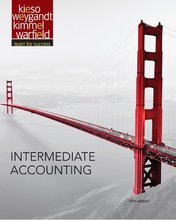
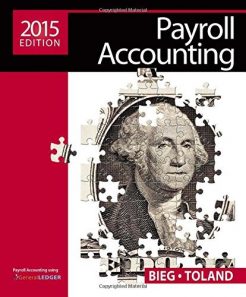
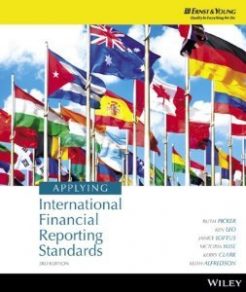
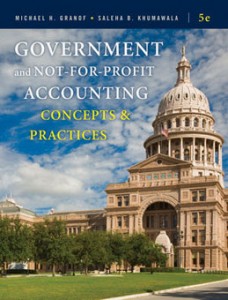
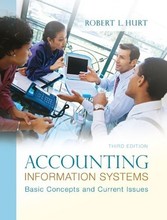

Reviews
There are no reviews yet.